Clothes...and other things that matter
By Alexandra Shulman (Cassell, £16.99)
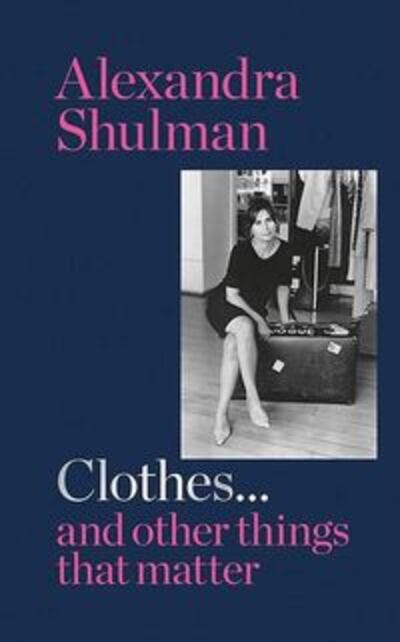
Editor of British Vogue from 1992 until her resignation three years ago, Alexandra Shulman’s book begins with an inventory of all the clothes and accessories in her wardrobe (have you ever done this?) which amounted to more than 500 items. The biggest numbers were 37 handbags and the same number of skirts, followed by 34 pairs of shoes, 34 jackets and 31 knickers etc.
Her annual allowance at Vogue was £4,000 to spend on clothes, so her tally made her think about what clothes meant to her as an integral part of her former professional life and what they now mean in her new one.
Office clothes – knitwear, skirts, high heels – were rarely dressed in otherwise, others were worn to “slough off Vogue” in the evening. Now her armour is thick sweaters and socks in winter.
The book’s chapters have dissertations on everything from red shoes, sloppy Joes and bras to slip dresses, handbags, big ticket dresses and dressing gowns. Red shoes are “show off”, a Chanel jacket can impress a prospective employer, the trench coat “doesn’t shriek gender or sexuality” while plain white shirts, leather jackets, black turtlenecks and denim are “loaded with a crate of style significance”.
Handbags are “visible to all, but inside there is our private world housing our individual survival arsenal”, she writes. In contrast to the icy Anna Wintour, Shulman comes across as more homely but forget any revelatory insights about her, Lagerfeld or others; on them she remains as discreet as her navy ensembles, “the colour I am drawn to when I feel vulnerable or when I want a little bit of support”, adding that she has 26 items of navy clothing “not counting underwear”.
The Chiffon Trenches
A memoir by André Leon Talley (4th Estate, £20)
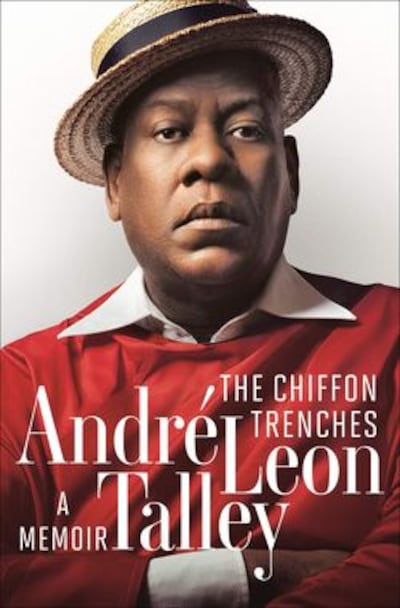
Larger than life in every sense, towering 6’7” over celebrities and swathed dramatically in floor-length capes or kaftans, André Leon Talley knows the power of the big fashion statement. From a humble Jim Crow background in North Carolina with a passionate and obsessive interest in fashion and a devoted Francophile, he rose to become creative director of Vogue and over the past five decades became a presence at international fashion events accompanying Anna Wintour and sitting front row.
His life was one of excess and extravagance – first class travel or private jets, shopping trips by Concorde, Fendi furs and a €50,000 gift from Karl Lagerfeld for his 50th birthday made him a legendary figure in the world of high fashion decadence.
Reactions to his memoir have mostly fastened on his 30-year relationship with Wintour whom he has described as more interested in power than in fashion and who finally dumped him from his red-carpet interviews at the annual Met Gala to his utter humiliation and anger.


Well written and snappy, his belief in his own talent is unshakeable, his paragons of style mostly wealthy celebrities, but his endless descriptions of his clothes and those worn by his famous friends becomes a bit tedious. Having fallen from grace, the bombast now petulance, he seems a rather pathetic figure still nursing his wounds from what he considers his outrageously unfair treatment. But always entertaining.
Chanel’s Riviera
By Anne de Courcy (Weidenfeld & Nicholson, £20)
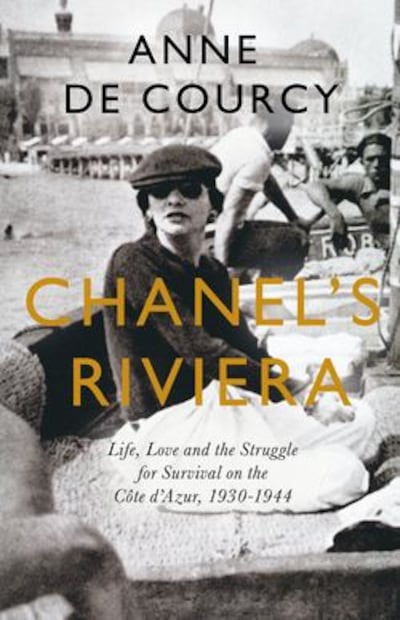
Famously described by Somerset Maugham as “a sunny place for shady people”, the Cote d’Azur was a magnet for writers, artists, the rich and famous in the Riviera’s heyday of the 1930s. Chanel, then the most celebrated dress designer in the world, built an imposing villa in Roquebrune called La Pausa and came there every summer often with a lover, most notably the Duke of Westminster, and always with friends that included Jean Cocteau, Winston Churchill, Stravinsky, Salvador Dali and members of the Ballet Russes. (Sold by Chanel in 1953, it was bought by a wealthy Hungarian publishing magnate and, after his death, was put up for sale for €40 million. It was bought by the Wertheimer brothers, owners of Chanel in 2016.)
The book is an account of a period that straddled two extremes – one of luxury and excess, of champagne-fuelled parties, drugs and gambling, the sundrenched hedonism that attracted “an exotic mélange of film stars, aristocrats, millionaires, playboys and glamorous women on the make”. But the advent of the second World War changed everything, the area lost its shine as its inhabitants, rich and poor, had to deal with the horrors of occupation.
A vivid social history centred on Chanel, this is an engaging portrait of life in the 1930s and 1940s in the Riviera and how she and her many friends dealt with the new realities during those decades.
The Glossy Years
By Nicholas Coleridge. (Penguin paperback, £9.99)
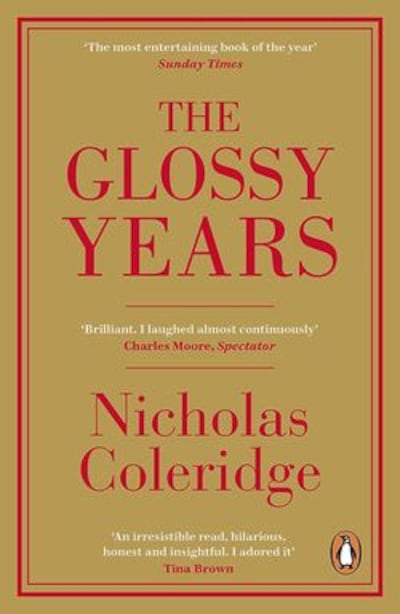
You only have to look at the book’s index with its 16-page list of every well-known name in fashion, art, politics, music and the media to get some idea of Nicholas Coleridge’s wide circle of influence. As a Conde Nast publishing supremo for more than 30 years, chairman of the V&A and the British Fashion Council, the photos alone (in which he is always beaming) tell their own story of his prodigious, well-connected social life and genial charm.
Privileged and patrician, his family background, Eton and Cambridge education provided a seamless entrée into the glamorous world of glossy magazines from Tatler, the Evening Standard and editor in chief of Harpers & Queen to president of Conde Nast international, publishers of Vogue, Vanity Fair and other magazines.
His book is an entertaining read packed full of amusing anecdotes told with the polished self-deprecation so typical of his class. His assessments of people are sharp, shrewd and often waspish; his friend veteran Vogue publisher Stephen Quinn (now retired) is described as a “buccaneering salesman, a vehement socialist Irishman with red socks, an orphan from Co Kilkenny”.
While his name dropping becomes dizzying, the book also captures the spirit of the once glory days of glossy magazines and their now changing times and challenges.
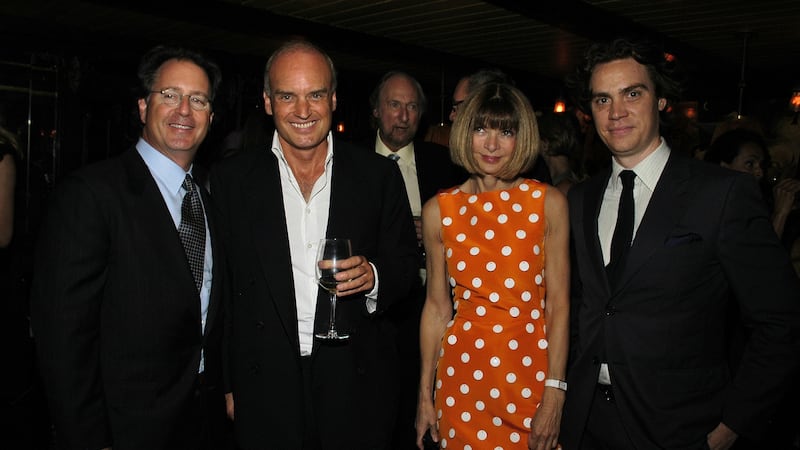
Why French Women Wear Vintage
By Aloïs Guinut (Mitchell Beazley, £16.99)
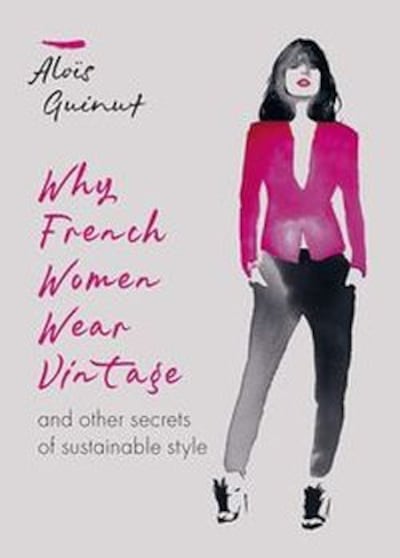
Aloïs Guinut, whose proud claim is that she has been “three years fast fashion free”, is a Parisian personal shopper, stylist and guide who previously worked as a fashion trend forecaster. Her first book, Dress Like a Parisian, was published two years ago and this one is all about dressing sustainably in a stylish way.
French people, she argues, are suspicious of ephemeral trends and the proportion of those who buy secondhand clothes went from 15 per cent in 2009 to 30 per cent in 2018.
She has advice on decluttering, what to keep, what to get rid of, the importance of basics, tips on navigating online shopping and how to make new outfits from old clothes.
It is packed with information and has interviews with 24 Parisians about their style, where they shop and their upcycling advice.






















